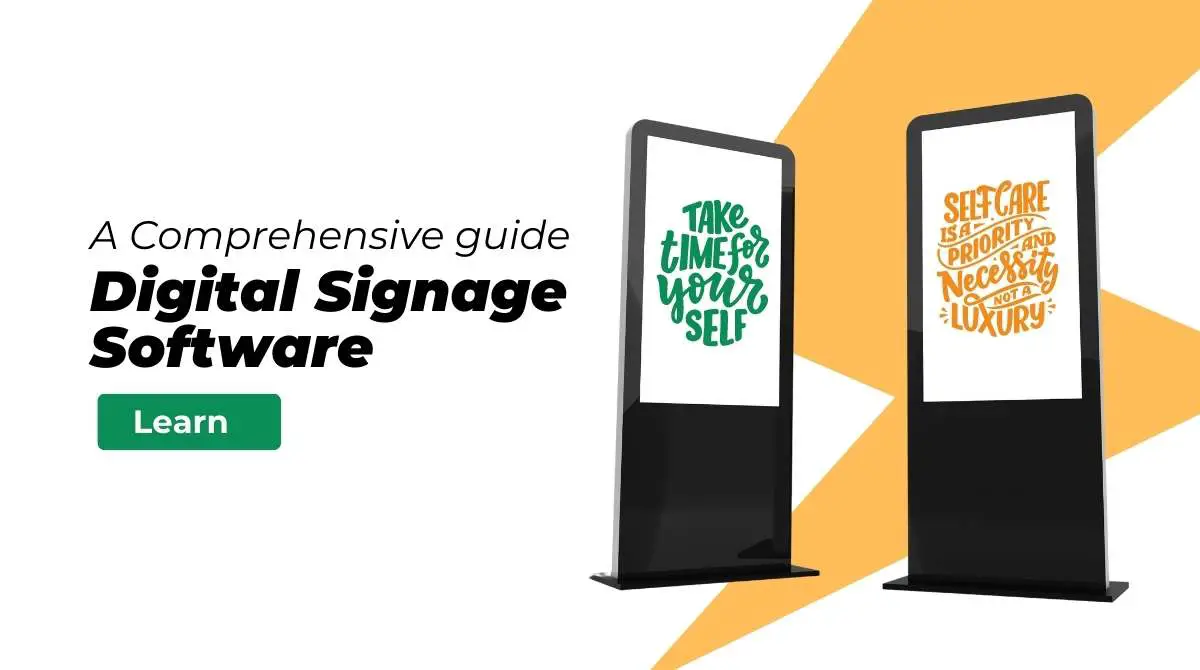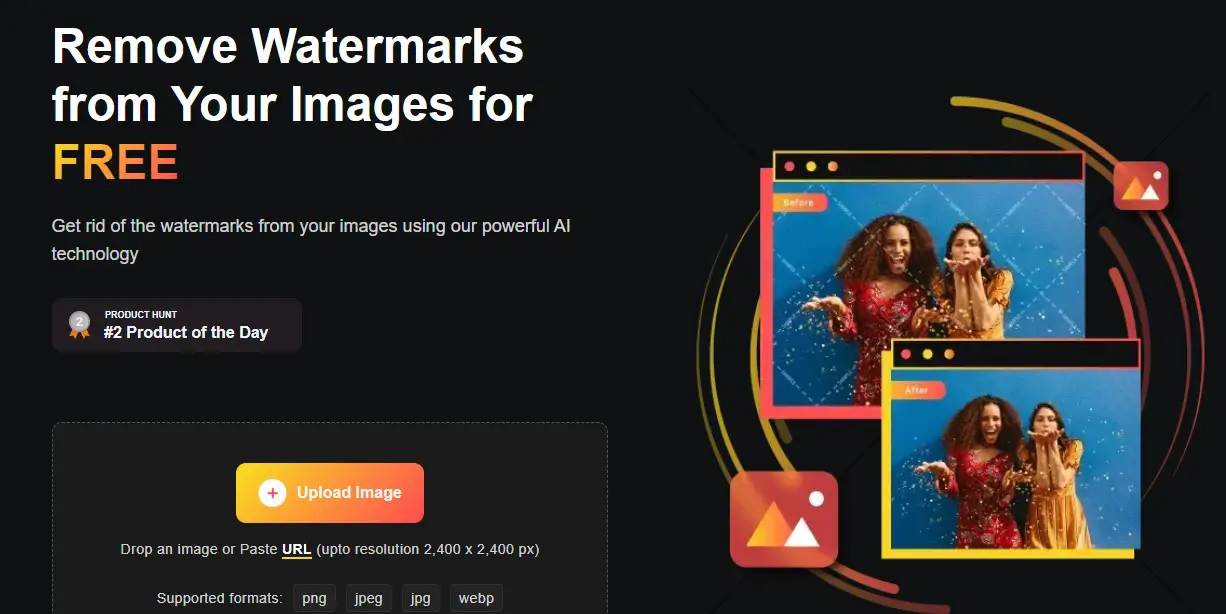Digital signage software is a powerful tool for businesses of all sizes, allowing them to create engaging, dynamic displays that capture the attention of customers and employees alike. Whether you’re looking to promote products, share important information, or simply enhance the overall customer experience, digital signage software has something to offer. In this comprehensive guide, we’ll explore the best digital signage software options available, and help you choose the right solution for your business.

What is Digital Signage Software?
Digital signage software is a digital tool that allows businesses to create, manage and display digital signs. The software allows users to create a wide range of content, including text, images, videos, and interactive elements, and then schedule, publish and monitor the content across a network of digital displays. Digital signage software can be used in a variety of settings, including retail stores, offices, schools, hospitals, and more.
Benefits of Digital Signage Software
There are many benefits of using digital signage software, including:
- Increased engagement: Digital signs are more engaging than traditional static signs, and can be used to create dynamic, interactive content that captures the attention of customers and employees.
- Greater flexibility: Digital signage software allows businesses to quickly and easily update content, making it a more flexible option than traditional static signs.
- Better communication: Digital signs can be used to share important information, such as promotions, company news, and emergency alerts, with customers and employees in real-time.
- Enhanced customer experience: Digital signs can be used to create a more immersive and engaging customer experience, whether in a retail store or other setting.
- Improved ROI: Digital signage software can be an effective way to increase sales, reduce costs, and improve the overall return on investment for businesses.
Top Digital Signage Software Options
There are many digital signage software options available, each with its own unique features and benefits. Some of the top options include:
- ScreenCloud : ScreenCloud is a cloud-based digital signage software that allows businesses to create, manage and display digital signs on any device. It offers a wide range of features, including real-time analytics, scheduling, and content management.
- Signagelive : Signagelive is a cloud-based digital signage software that offers a range of features, including drag-and-drop content creation, scheduling, and real-time analytics.
- BrightSign : BrightSign is a digital signage software that offers a range of features, including real-time analytics, scheduling, and content management. It also supports 4K resolution and interactive content.
- Navori : Navori is a powerful digital signage software that allows businesses to create, manage and display digital signs on any device. It offers a wide range of features, including real-time analytics, scheduling, and content management.
- XhibitSignage : XhibitSignage is a cloud-based digital signage software that allows businesses to create, manage and display digital signs on any device. It offers a range of features, including real-time analytics, scheduling, and content management.
How to build a digital signage system?

Building a digital signage system involves several steps, including:
- Define your goals and objectives: Determine what you want to achieve with your digital signage system, such as increasing sales, improving customer engagement, or sharing important information.
- Assess your hardware needs: Determine the number of displays you need, the type of displays, and the necessary hardware such as media players, cables, and mounting equipment.
- Choose a digital signage software: Select a digital signage software that best fits your needs and budget. Consider factors such as ease of use, scalability, and compatibility with your existing hardware and infrastructure.
- Create content: Use the software to create engaging and dynamic content that supports your goals and objectives. This can include text, images, videos, and interactive elements.
- Schedule and publish content: Use the software to schedule and publish your content to the appropriate displays, ensuring that the right content is displayed at the right time.
- Monitor and measure results: Use the analytics and reporting features of the software to monitor and measure the effectiveness of your digital signage system. Use this information to make adjustments and improve the system over time.
- Maintenance: Regularly update the software, check the display and hardware, and troubleshoot any issue that arise.
It’s also important to consider factors such as security, data privacy, and compliance with any relevant regulations. Additionally, it’s helpful to train your staff and employees to use the system effectively and troubleshoot any issues that may arise.
Choosing the Right Digital Signage Software
When choosing a digital signage software, it’s important to consider your specific business needs. Some key factors to consider include:
- The number of displays you plan to use
- The type of content you plan to display
- The level of interactivity you require
- The level of analytics and reporting you need
- Your budget and available resources
- The level of support and customer service offered by the software provider
One important aspect to consider is the scalability of the software, as your business needs may change over time. It’s also important to ensure that the software is compatible with your existing hardware and infrastructure.
Another important consideration is the ability to integrate with other systems and platforms, such as CRM or e-commerce systems. This will allow you to easily share and display relevant information, such as product details and customer data, on your digital signs.
When evaluating different digital signage software options, it’s also a good idea to try out the software before making a final decision. Many software providers offer free trials or demos, which can give you a sense of how the software works and whether it’s the right fit for your business.
What device is used for digital signage?

There are a variety of devices that can be used for digital signage, including:
- Commercial-grade displays: These displays are specifically designed for digital signage and can be found in a variety of sizes and resolutions. They typically feature a built-in media player and can be mounted on walls or placed on stands.
- Tablets and iPads: These devices can be used to create interactive digital signs, and can be mounted on walls or placed on stands. They are particularly useful for creating interactive touch screen signs.
- Media players: These devices are small, low-cost and easy to install, and can be used to power digital signs. They connect to the display and play content from a USB drive or other storage device.
- PCs and Laptops: These devices are commonly used for digital signage, especially for larger screens. They have good processing power and storage capability, and can run various software for digital signage.
- Smart TVs: These devices have built-in software and internet connectivity, which makes it easy to display digital signs. They can also be controlled remotely and updated with new content.
- Raspberry Pi: These are small, low-cost, and low-power computers that can be used to display digital signs. They are ideal for small businesses and projects, and can be easily integrated with other devices.
The choice of device will depend on your specific needs and budget. It’s important to consider factors such as screen size, resolution, interactivity, and cost when choosing a device for your digital signage.
Frequently Asked Questions
Can I try out the software before making a final decision?
Yes, many software providers offer free trials or demos, which can give you a sense of how the software works and whether it’s the right fit for your business.
Can digital signage software integrate with other systems and platforms?
Yes, many digital signage software options can integrate with other systems and platforms, such as CRM or e-commerce systems. This allows businesses to easily share and display relevant information, such as product details and customer data, on their digital signs.
How can I ensure that my digital signage software is scalable?
When evaluating different digital signage software options, it’s important to consider the scalability of the software. This means making sure that the software can grow and adapt as your business needs change over time. It’s also important to ensure that the software is compatible with your existing hardware and infrastructure.
Which digital signage is best?
The best digital signage software depends on your business needs. It’s crucial to compare digital signage software features and pick the right one for your business. The number of displays you plan to use, the type of content you plan to display, the level of interactivity you need, the level of analytics and reporting you need, your budget and resources, and the software provider’s support and customer service should be considered.
Before making a final decision, many software providers offer free trials or demos to give you a sense of how the software works and whether it’s right for your business.
How can I create a digital signage for free?
There are a few online tools that can be used to create digital signs for free, such as Google Slides, PowerPoint or Canva. These tools can be used to create simple digital signs with text and images, but may not have all the features of a dedicated digital signage software.
Conclusion
Digital signage software is a powerful tool for businesses of all sizes, allowing them to create engaging, dynamic displays that capture the attention of customers and employees alike. Whether you’re looking to promote products, share important information, or simply enhance the overall customer experience, digital signage software has something to offer. With so many options available, it’s important to carefully evaluate your business needs and choose a solution that is the right fit for your organization.
Read also: 15 Best School management system Software
![[2023]Downloading YouTube Videos on iPhone The Ultimate Guide to Downloading YouTube Videos on iPhone The Ultimate Guide to](https://teachtactic.com/wp-content/uploads/2023/08/Downloading-YouTube-Videos-on-iPhone-The-Ultimate-Guide-to-150x150.jpg)






![[2023]Downloading YouTube Videos on iPhone The Ultimate Guide to 5 Downloading YouTube Videos on iPhone The Ultimate Guide to](https://teachtactic.com/wp-content/uploads/2023/08/Downloading-YouTube-Videos-on-iPhone-The-Ultimate-Guide-to.jpg)


